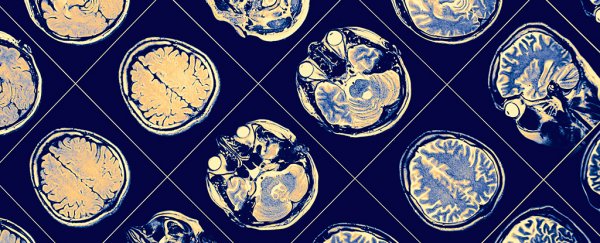The damaging effects of Alzheimer's disease are thought to be partly caused by the build-up of protein plaques in the brain, which break down neural connections. But not everyone with plaque build-up develops Alzheimer's – and now we might know why.
A team of researchers has identified a protein signature in the brains of people with accumulated plaques but no dementia. This signature seems to stop plaques gumming up the crucial communication channels between neurons.
That's as far as this research goes – we don't know how this mix of proteins comes about, or why it stops plaques from interfering with the brain's synapses – but it's another piece of the Alzheimer's puzzle that could help to push research and treatments forward.
"We don't yet fully understand the exact mechanisms responsible for this protection," says one of the team, Giulio Taglialatela from the University of Texas. "Understanding such protective biological processes could reveal new targets for developing effective Alzheimer's treatments."
The findings come at an interesting time for Alzheimer's research. In the 100-plus-year history of the disease, the majority of the recent evidence has pointed to amyloid beta plaques and tangles of another protein called tau being responsible for jamming up the brain's most vital functions.
Scientists haven't worked out where these plaques and tangles come from, or how to fight them, but they seem to be the main culprits for causing damage.
The only problem is that nothing has worked in trying to target amyloid beta and tau to beat or even slow down Alzheimer's.
Research into combating any disease always involves some element of trial and error, but the error rate for Alzheimer's has been unusually high.
That has led some scientists to wonder if we're aiming at the wrong targets in terms of the amyloid beta protein plaques and the tau tangles. The fact that many people with these features don't develop Alzheimer's supports the view that something else is going on.
And here's where the new study comes in: several of the same researchers had previously discovered that something was stopping the amyloid beta and tau from collecting at the synapse junctions – the communication channels between neurons – in people who didn't experience cognitive decline despite plaque built-up. But what was it?
Through detailed analysis of frozen brain tissue donated by volunteers in brain ageing studies, the scientists got their answer – 15 distinct proteins that set this group of people apart from those with plaque and tau build-up that do develop Alzheimer's, and those without any brain blockages or dementia at all.
Future studies will have to look more closely at why this protein signature has the effect it does, and what creates the mix of proteins in the first place, but it's another useful discovery in getting to the root causes of this devastating disease.
While scientists debate the value of sticking with the amyloid beta hypothesis, it's worth remembering we're all on the same side really – everyone is trying to get to the bottom of Alzheimer's and looking for a way to treat it.
It may be that we first have to settle for a better early warning system for Alzheimer's. Some scientists think treatment trials have been so ineffective because we're not testing the drugs at an early enough stage – and this new research could help with that.
With plenty of evidence supporting the idea that amyloid beta and tau play an important role in the development of Alzheimer's, as well as a lot of research suggesting other factors are involved, it's going to take a lot of study to get to the bottom of this debilitating disease.
But many scientists are up for the challenge – check out seven key breakthroughs that researchers have recently made in our understanding of Alzheimer's.
The research has been published in the Journal of Alzheimer's Disease.
